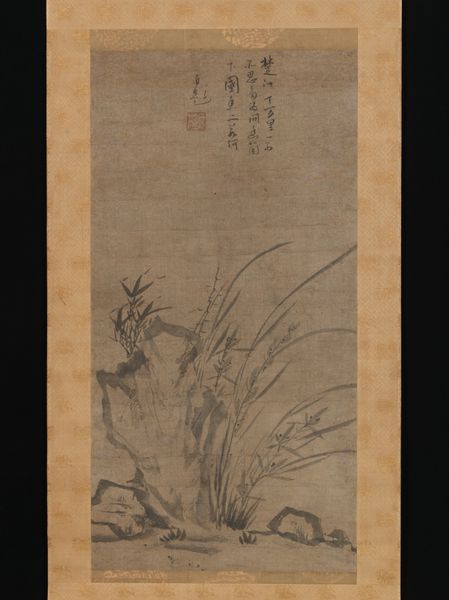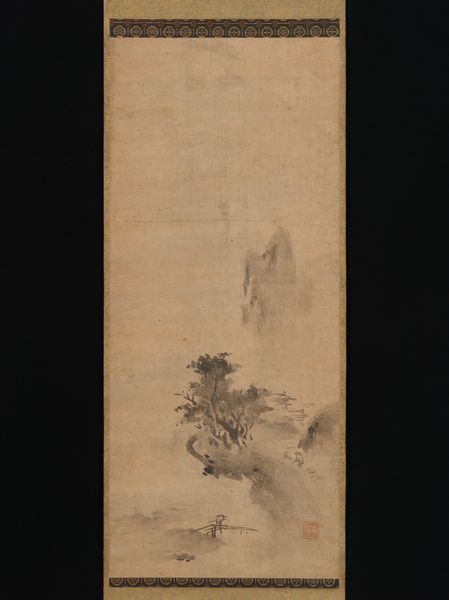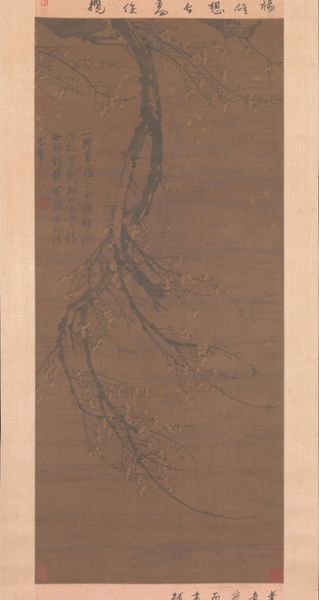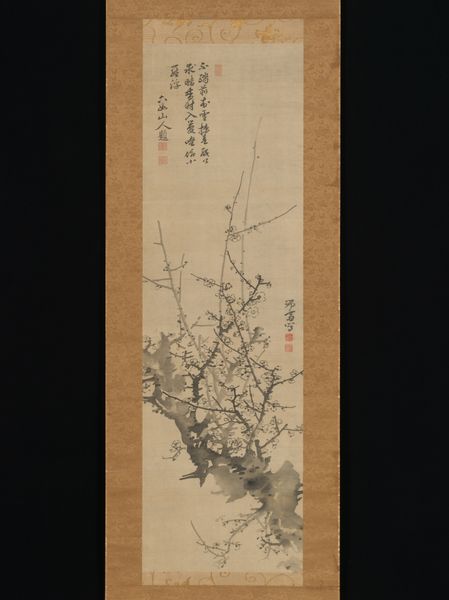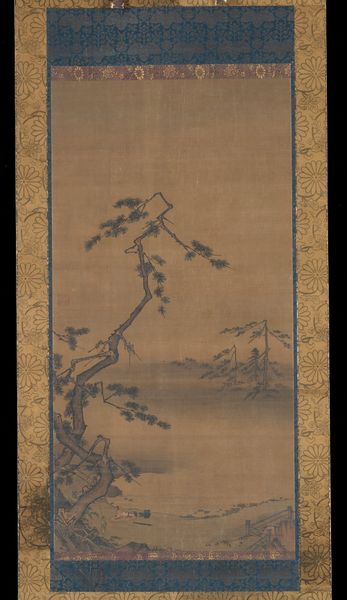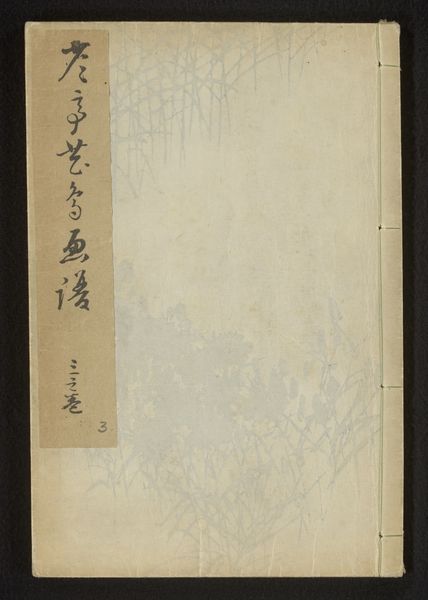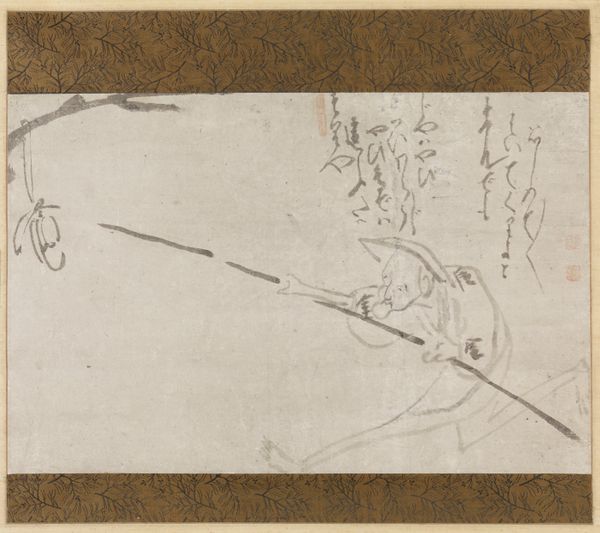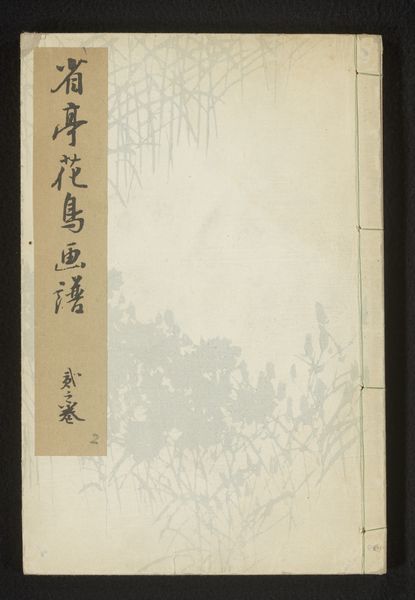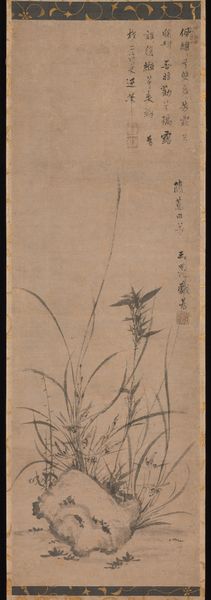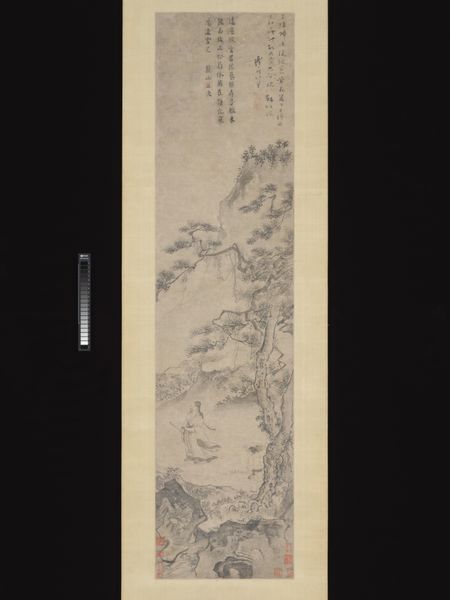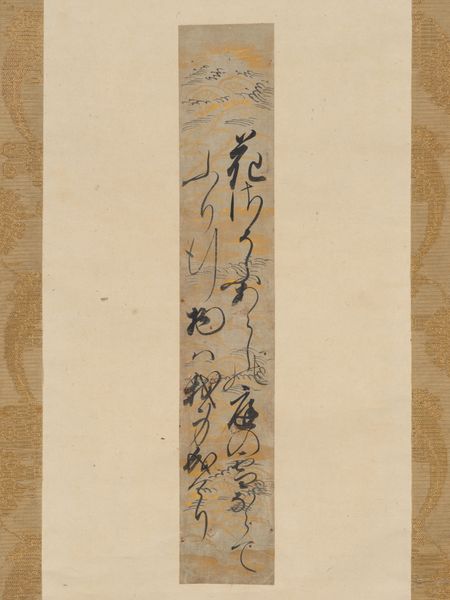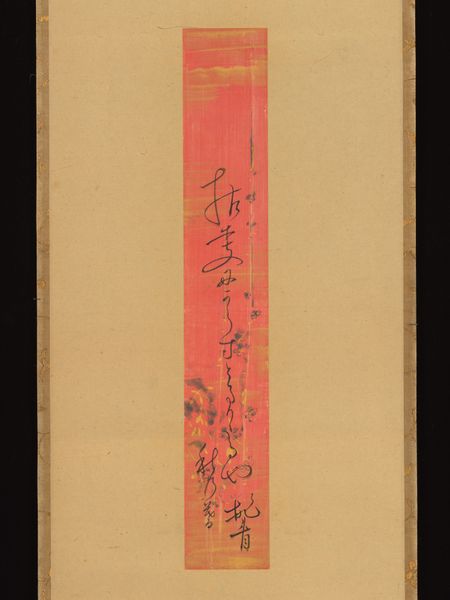
drawing, ink
#
drawing
#
asian-art
#
landscape
#
bird
#
figuration
#
tea stained
#
ink
#
line
Dimensions: Image: 32 3/4 × 13 3/4 in. (83.2 × 34.9 cm) Overall with mounting: 63 3/4 × 18 7/16 in. (161.9 × 46.8 cm) Overall with knobs: 63 3/4 × 20 1/4 in. (162 × 51.5 cm)
Copyright: Public Domain
Taikyo Genju painted "Wagtail on a Rock" in ink on silk, most likely during the late Kamakura or early Muromachi period of Japan. The scene evokes a sense of quiet observation, but what might this image have meant to its original audience? Zen Buddhism, with its emphasis on meditation and mindfulness, gained prominence in Japan during this period. The wagtail, a small and unassuming bird, could symbolize humility and the importance of finding enlightenment in the everyday. The stark, monochrome palette reflects the Zen aesthetic of simplicity and restraint. Moreover, the painting’s existence within a monastic setting would have informed its reception, encouraging contemplation and introspection amongst the monks. By studying historical texts and religious practices, we can begin to understand the rich cultural context surrounding "Wagtail on a Rock" and appreciate its significance beyond its aesthetic appeal.
Comments
No comments
Be the first to comment and join the conversation on the ultimate creative platform.
